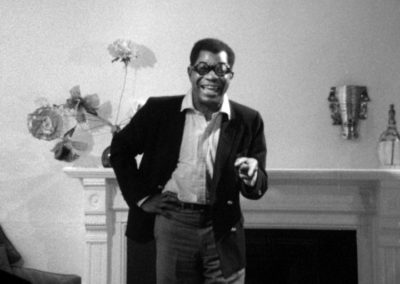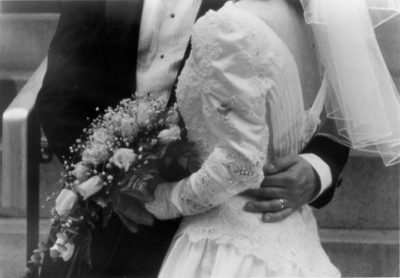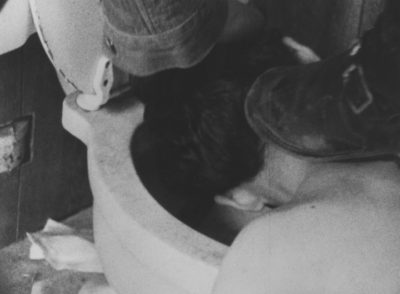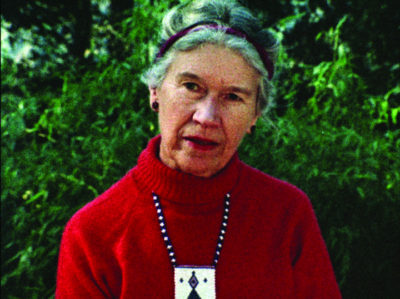
06 Feb Powerful Images of Pleasure and Experimentation Celebrate Queer Bodies
MoMA’s screening series “Now We Think as We Fuck”: Queer Liberation to Activism argues for the inclusion of less respectable films in the queer canon.
Caden Mark Gardner

A new repertory screening series at the Museum of Modern Art, unabashedly titled “Now We Think as We Fuck”: Queer Liberation to Activism, is daring and necessary. While being fully comprehensive within a relatively tight timeframe is impossible, the program charts underground and arthouse filmmaking from the pre-Stonewall era through gay liberation, the AIDS crisis, and New Queer Cinema. Such films are important for reconciling how much of queer film history is as tied to pornography and erotica as it is to activism. The title comes from a quote in Tongues Untied, Marlon Riggs’s landmark 1989 documentary on life at the intersection of queerness and blackness.
The earliest films in the series are from the late 1960s, featuring the likes of Kenneth Anger (already a cemented icon of the American avant-garde) and Andy Warhol (already an avatar of underground cinema). Queer desire, fetish, and sex are laid bare in films like Warren Sonbert’s Amphetamine and Avery Willard’s Leather Narcissus. Portrait of Jason, Shirley Clarke’s groundbreaking profile of African American gay hustler Jason Holliday, functions in conversation with these works. The film’s simplicity, letting its subject directly tell the camera his debauched stories, makes it compulsively compelling, but its undercurrent of neuroticism and sadness has not been lost on critics (nor has the fact that it was made by a straight white director).

Queer avant-garde and experimental works are not confined to the gay male form; some of its most radical offerings were from women. Su Friedrich and Barbara Hammer’s films are pointed criticisms about being women and artists in their times. Friedrich’s First Comes Love probes the heteronormative institution and entrenched customs associated with marriage, with the director commenting on how gay couples are excluded from these concepts. (Here we see foreshadowing of marriage equality eventually emerging as a major focal point of queer activism.)

The true revelation of this series is its focus on work from the 1970s, amid the proliferation of gay pride parades, the election of Harvey Milk, and fending off so-called “Moral Majority” figures like Anita Bryant. The emergent gay visibility was an incredibly bold step — often too bold for the American mainstream. Homoerotica and gay pornography hit their peak in this period, and they’re represented in this series by a series of digitally restored films from Fred Halsted. His 1972 short The Sex Garage was made for pleasure, but also functions as a playful meta commentary on how disruptive it is to portray same-sex relations even in porn. Before watching two men have sex, it starts with a man and a woman doing the deed. His masterpiece LA Plays Itself (believed to be the first film in history to depict a man being fisted) is a fragmented series of sexual conquests against the backdrop of nature. It’s Genet and Anger’s obsessions and desires brought to their carnal extreme.

But Halsted’s most ambitious undertaking, Sextool, is the appointment viewing. Originally shot on 35mm as opposed to 16mm (most gay porn theaters at the time only had 16mm projectors), it was a troubled project that doubled down on the provocations and most intense sexual acts in LA Plays Itself by centering on BDSM. The reaction to the movie severely damaged Halsted’s career. The Hollywood Reporter declared it the type of film that “Nazi concentration camp commanders commission for their jaded amusement.” Now this rarely screened gem is an important artifact of gay pornography from right before it became an industry much like straight porn.
Artists like Halsted have been mostly ignored by queer film history, suffering in many people’s minds due to their retroactive knowledge of the looming AIDS crisis, which caused respectability politics to reshape the image of homosexuality to one devoid of sex in polite society. In the ’80s and ’90s, much of New Queer Cinema was created to counter that sex-negative, blame-the-victim, knee-jerk reaction with impassioned and radical work. But those who did not survive the AIDS crisis still suffer this stigma. Gay sex was political and a source of political debate in the ’70s (which continues to persist), and as Halsted showed, it was more than provocation. It was art.

“Now We Think as We Fuck” chronicles the cyclical nature of gay visibility over the decades, a consequence of the push and pull between the yearn to live openly along and learned caution. This is on full display in the 1977 oral history documentary Word is Out: Stories of Some of Our Lives, which interviews a series of gay people across America. One lesbian pontificates on the downsides to wider acceptance of gay people: “We lose our sense of the ‘in-group’ — the adventure of being different in a straight world … Having our own language, our own terminology. I’ll miss that a lot. The secret society … That I belong somewhere that nobody knows about.” That sentiment endures, being queer in a world that wants only part of you. This series reconsiders a body of work that was not for everyone, but delivered powerful images of pleasure, experimentation, and celebration centered around the queer body, all of which deserves to be placed alongside the more generally accepted queer canon.
